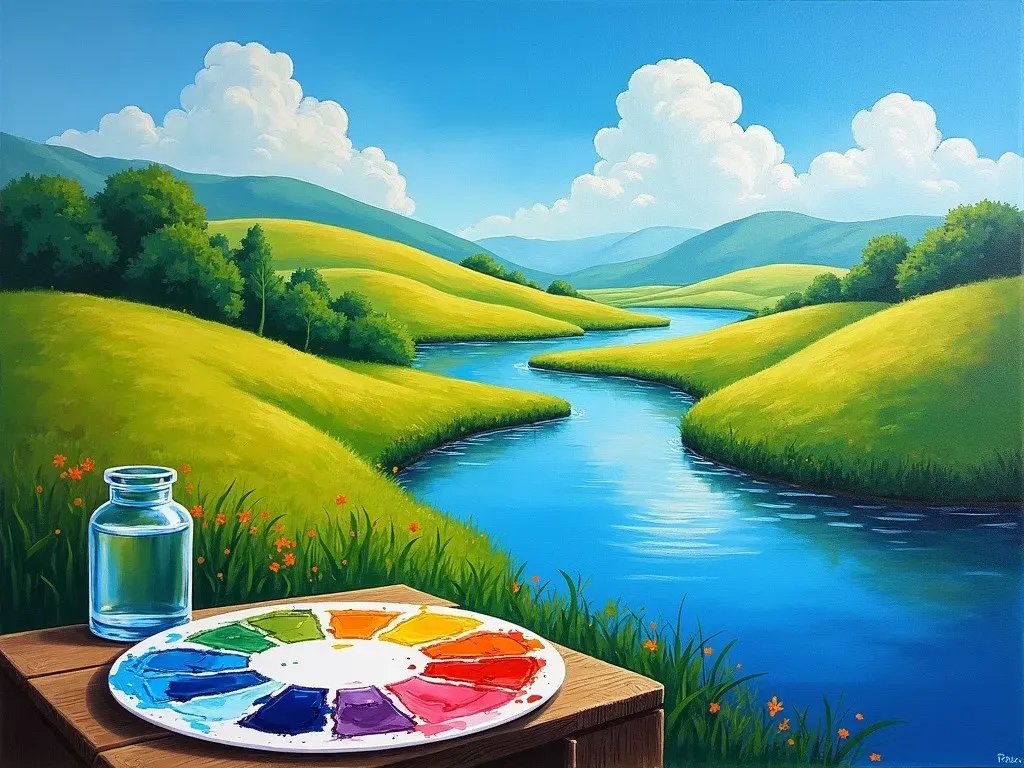When it comes to oil painting, a common question arises: "Do you use water with oil paint?" While traditional oil paints typically require solvents like turpentine for thinning and cleanup, advancements in art supplies have introduced water-mixable oil paints that challenge this norm.
The Reality of Mixing Water with Oil Paint
To understand the implications of using water with oil paints, we first need to explore the differences between traditional oil paints and the newer water-mixable varieties. Traditional oil paints are created with pigments suspended in oils such as linseed or safflower. These paints require solvents for thinning and cleaning, which can pose health risks due to fumes and necessary ventilation. On the other hand, water-mixable oil paints have been specially formulated to dissolve in water, providing a safer and more user-friendly option.
Fact and Figures
| Characteristic | Traditional Oil Paints | Water-Mixable Oil Paints |
|---|---|---|
| Solvent Requirement | Yes (typically turpentine or mineral spirits) | No; clean up with water |
| Viscosity | Thick | Thinnable with water |
| Drying Time | Longer (days to weeks) | Moderate (days) |
| Fumes Generated | Yes | Minimal |
| Ease of Cleanup | Complicated | Easy |
Benefits of Water-Mixable Oil Paints
There are several advantages to utilizing water-mixable oil paints, making them an attractive choice for aspiring and professional artists alike:
- Healthier Environment: The absence of harsh solvents leads to a healthier studio environment, particularly for those sensitive to chemicals.
- Versatility: Artists can use water as a medium for both thinning and cleaning brushes, allowing for greater flexibility during the painting process.
- Less Mess: Water cleanup means no more dealing with the complicated disposal of solvents, making it easier to maintain a clean workspace.
- Layering Ability: Water-mixable oils can be used in a layering technique, similar to traditional oils, resulting in beautiful, textured paintings.
Table: Comparison of Cleanup Methods
| Cleanup Method | Traditional Oil Paints | Water-Mixable Oil Paints |
|---|---|---|
| Brushes | Use solvents | Use water |
| Paint Palettes | Solvent to clean | Rinse with water |
| Canvas | Requires scraping for oils | Water-soluble for mild wash |
| Skin | Harsh scrubbing needed | Soap and water |
Common Misconceptions
Despite the increasing popularity of water-mixable oil paints, misconceptions continue to surround their usage.
Can You Use Water with Regular Oil Paints?
No, using water to clean or thin traditional oil paints is not advisable. The mixture can cause the paint to seize and alter its properties, resulting in an undesirable finish. If you wish to use oil paints without hazardous solvents, opting for water-mixable variants is the solution.
Tips for Using Water-Mixable Oil Paints
- Experiment with Ratios: Learning how much water to add to achieve desired fluidity while maintaining pigment integrity.
- Blend Wisely: Use water sparingly, as too much can make the paint lose its richness; consider using mediums designed for water-mixable oils.
- Brush Technique: Use brushes similar to traditional oil brushes, but be aware they may need to be cleaned differently.
- Layering: Allow thin layers to dry completely before adding new ones for the best results.
Frequently Asked Questions (FAQs)
Can You Use Water with Oil Paints?
No, traditional oil paints should not be mixed with water as it can disrupt the paint’s integrity.
What Are Water-Mixable Oil Paints?
These are specially formulated oil paints that can be thinned and cleaned up using water instead of solvents.
Are Water-Mixable Oil Paints a Good Alternative?
Yes, they are an excellent alternative for those looking for a safer and simpler painting experience.
How Do You Clean Up After Using Water-Mixable Oil Paints?
Simply rinse your brushes and tools with water, making cleanup much quicker than with traditional oil paints.
Do Water-Mixable Oil Paints Dry Faster?
While they don’t dry as quickly as acrylic paints, water-mixable oils tend to have a moderate drying time that is shorter compared to traditional oils.
Conclusion Thoughts
The exploring of water-mixable oil paints marks an exciting new chapter in the artistic community, providing options that empower artists to create without compromising their health or cleanliness. With their benefits clearly outlined, artists might consider transitioning from traditional methods to these innovative paints, enhancing both their work and their painting environments.
For more in-depth information about using water-mixable oils, you can refer to Fine Art Tutorials.
By embracing this new technology, painters can continue to develop their skills and explore new horizons in their artistic journey.
